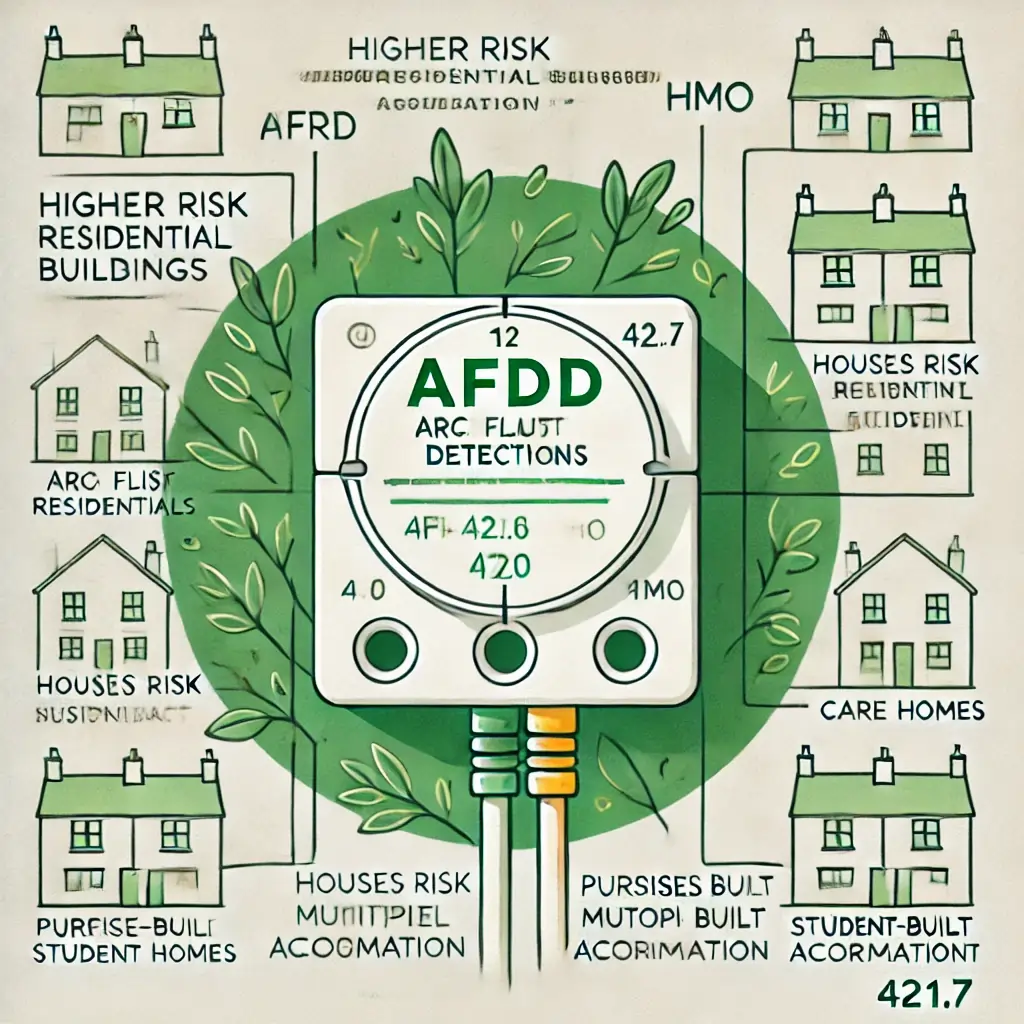Where is the installation of AFDDs mandatory for AC final circuits supplying socket-outlets according to BS 7671?
Regulation 421.1.7 states: AC final circuits supplying socket-outlets with a rated current not exceeding 32 A shall be provided with arc fault detection devices (AFDD) conforming to BS EN 60669-2-2. The following locations are included: Higher Risk Residential Buildings (HRRB), Houses in Multiple Occupation (HMO), Purpose-built Student Accommodation, Care Homes.

OW London Electrician and Home Automation Engineers Team
Where is the installation of AFDDs mandatory for AC final circuits supplying socket-outlets according to BS 7671?
Regulation 421.1.7 states :
"AC final circuits supplying socket-outlets with a rated current not exceeding 32 A shall be provided with arc fault detection devices (AFDD) conforming to BS EN 60669-2-2. The following locations are included:
- Higher Risk Residential Buildings (HRRB).
- Houses in Multiple Occupation (HMO).
- Purpose-built Student Accommodation.
- Care Homes."
This new regulation mandates the use of AFDDs in specific high-risk locations to enhance electrical safety by detecting and mitigating arc faults, which are a common cause of electrical fires. Understanding where and how these devices should be implemented is crucial for compliance and safety in electrical installations.

Frequently Asked Questions
Q: Where is the installation of arc fault detection devices mandatory for AC final circuits supplying socket-outlets?
A: According to Regulation 421.1.7, AFDDs are mandatory for AC final circuits supplying socket-outlets with a rated current not exceeding 32 A in Higher Risk Residential Buildings (HRRB), Houses in Multiple Occupation (HMO), Purpose-built Student Accommodation, and Care Homes.
Q: What standard must arc fault detection devices conform to?
A: Arc fault detection devices must conform to BS EN 60669-2-2 as specified in Regulation 421.1.7.
Q: Why are arc fault detection devices important in these specific locations?
A: These locations, such as Higher Risk Residential Buildings, HMOs, student accommodations, and care homes, are considered high risk due to the potential for increased electrical usage and the vulnerability of their occupants. AFDDs help prevent electrical fires by detecting and disconnecting circuits with arc faults.
Q: Are AFDDs required for all socket-outlets?
A: No, AFDDs are specifically required for socket-outlets with a rated current not exceeding 32 A in the specified high-risk locations as per Regulation 421.1.7.
Q: What are the benefits of using AFDDs in electrical installations?
A: AFDDs provide enhanced protection against electrical fires caused by arc faults, thereby increasing the safety of electrical installations in high-risk environments. They are a proactive measure to identify and mitigate potential hazards before they result in a fire.
What users Saying
Discover what our customers think about our services. Their feedback reflects our commitment to delivering exceptional service and expert solutions for all electrical and security needs.

